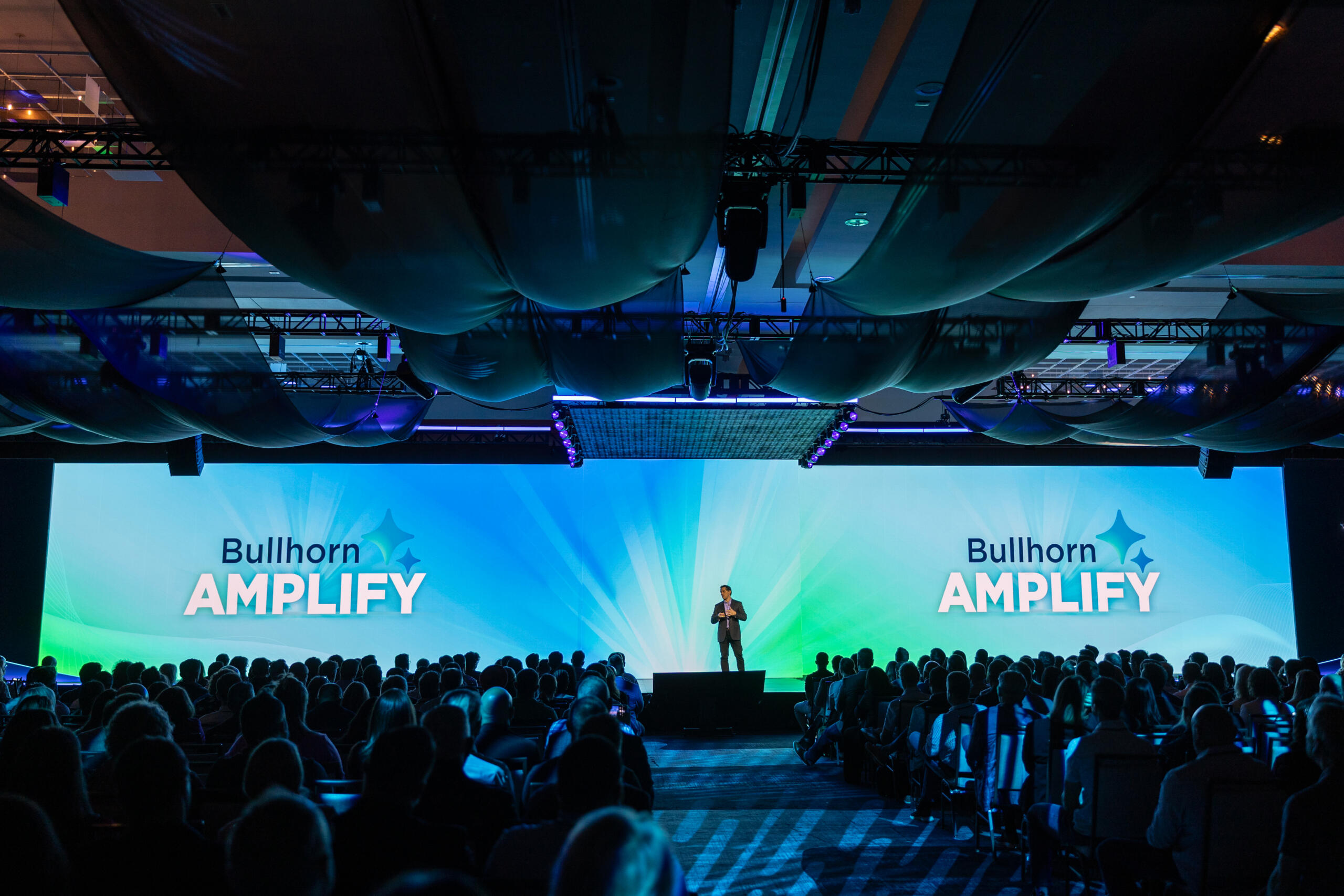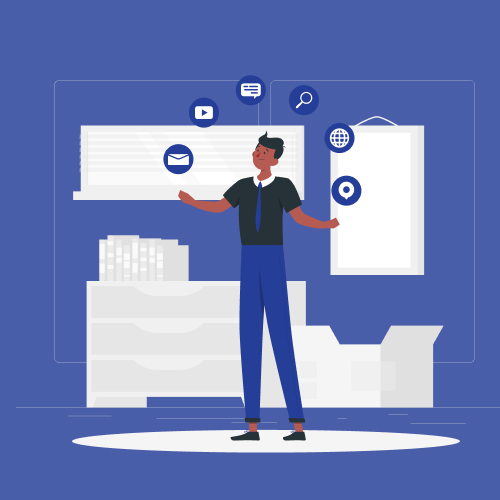Over 1,000 attendees, 74 speakers, and 46 sponsors: Engage Boston 2025 was a memorable two days of learning, connection, and inspiration for the recruitment industry. In two days, we heard from industry leaders, Bullhorn product experts, and the people who are changing recruitment every day.
And nothing is changing recruitment more than AI. Our most recent GRID Industry Trends Report, which surveyed over 1,500 recruitment professionals, found that more than two-thirds of staffing firms are already using AI.
To dispel some myths on AI, offer his vision on the future of recruitment, and introduce the third wave of recruitment AI with a new first-of-its-kind solution, Bullhorn founder and CEO Art Papas kicked off Engage Boston 2025 with his opening keynote.
Read the highlights below.
AI: The end of jobs?
It seems that wherever you look, there’s wild speculation about how AI will soon replace workers. Social media is filled with abundant claims that one AI agent can replace entire software development teams, or even that AI is already capable of doing any job. But amidst the breathlessness around AI, what’s real and what’s just chatter?
To determine whether or not AI is really “killing jobs,” Papas dove into the numbers. Software development job postings have been on the decline since the middle of 2022. But that decline doesn’t correlate with the release of ChatGPT and the subsequent AI boom, which began in 2023. Instead, these postings began to dip due to economic factors – namely, rising federal interest rates. AI isn’t to blame for the drop in job postings; the picture is far more complex.
As for the recruitment industry, what’s next? Throughout staffing, Papas said, there’s been a feeling that something structural has changed. Are buyers truly moving away from contingent labor? To find out, Bullhorn collaborated with McKinsey Global Institute – and found that the answer was an unequivocal no. 87% of employers agree that contingent staffing is a strategic part of their workforce, and 66% of employers expect their use of contingent labor to stay the same or increase over the next three to five years. Additionally, McKinsey found that while as many as 700,000 contingent labor jobs may be impacted by the advent of AI, AI could create as many as 1.3 million new jobs by 2035.
As for the future of recruitment, it’s no use trying to predict when a snapback will come – firms need to adapt to today’s climate as the new normal. Instead of waiting for the market to improve, it’s time for recruitment agencies to find growth opportunities, using the tools at their disposal – especially AI – and amplify the power of their workforce.
“We should stop asking, ‘When’s the market going to come back?’ because we don’t have to wait. We should start asking how to perform in this climate.”
– Art Papas, Founder and CEO, Bullhorn
No one can predict the future. But while AI is here to stay, so is the contingent workforce.
The real impact of AI
AI won’t replace entire teams of people anytime soon, but what is it actually capable of, and how does that apply to staffing?
AI tools can sift through massive amounts of data quickly and tell us things we wouldn’t know unless we spent time conducting deep research. This means that AI agents and assistants can help sales teams prepare for meetings, find and source the best candidates, reach out to every candidate who applies for a job, and more. Papas cited feedback from a customer who, with an AI screening agent, found a candidate with the necessary experience for a job, but whom they would never have reached out to, because that experience wasn’t listed on his resume. One person alone can’t screen 1,000 applicants, but AI can.
“Computers don’t mind wasting their time. Think about all of the ways your business could be different if you had infinite time.”
– Art Papas, Founder and CEO, Bullhorn
For years, to grow a staffing business, the only way to increase your revenue was to expand your headcount. Because AI breaks the link between revenue and headcount, that’s all about to change. How would you run your business without those constraints?
Where do you start?
“I’ve heard this over and over from customers – how do I start?” said Papas. Because there are so many point solutions out there, it can be difficult for recruitment firms to know where to dive in. What should AI handle, and what should be left to humans? What functions can AI support? How should teams deploy AI?
That’s why, at the conclusion of his keynote, Papas introduced Amplify, a next-generation AI solution built exclusively for staffing and recruitment firms.
Amplify is a new way to bring AI into a staffing business. It automates sourcing, screening, and submissions—so your team can fill roles faster, hire smarter, and scale without growing headcount. The results speak for themselves: Amplify customers report a 51% increase in submissions to jobs and a 22% increase in fill rates. Plus, 85% of candidates screened by Amplify report a positive experience.
With Amplify, Bullhorn has made it easy to get started with AI – and start seeing the benefits right away. As Papas said, “People have said to us, ‘This is a different way of working, and we’re never going back.’”










